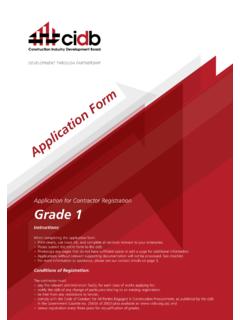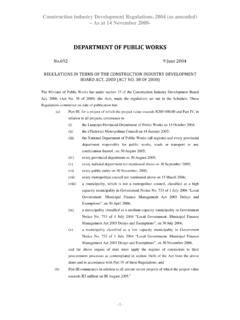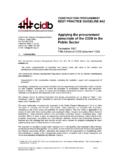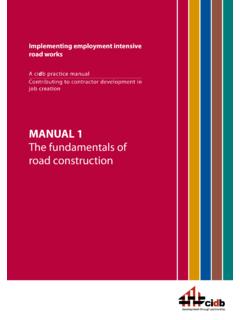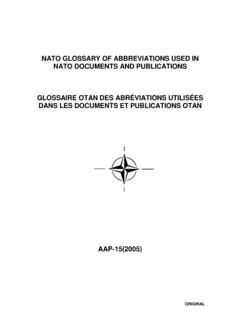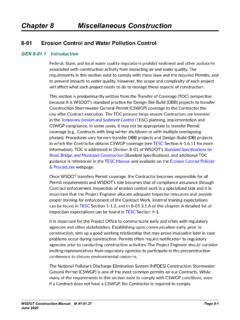Transcription of The procurement cycle - CIDB
1 Best Practice Guideline A1: The procurement cycle Page 1 December, 2007: Edition 3 of CIDB document 1001 Delivery management (see SAICE Practice manual # 2 Delivering construction projects using the design by employer contracting strategy 1) comprises a number of distinctly different processes and sub-processes, namely: planning which comprises the iterative processes of identifying objectives, programmes and projects that are to be undertaken; project delivery which comprises the undertaking of the projects identified in the planning processes; and programme completion where the programme objectives set are regularly evaluated and adjusted accordingly. procurement is the process that creates, manages and fulfils contracts. procurement as such forms an integral part of construction projects and occurs at any point in a project cycle where external resources are required to provide supplies and services in any combination or in the disposal of surplus plant, equipment and materials and the demolition of redundant buildings and infrastructure.
2 Public procurement in South Africa is regulated in all spheres of government and state owned enterprises through various pieces of legislation. (see Annexure 1 of Best Practice Guideline #A2, Applying the procurement prescripts of the CIDB in the Public Sector 2). The skills and competencies required to implement a procurement system in the public sector are set out in Annexure 1. 2. Principal procurement activities and associated steps and internal controls The starting point in developing any procurement system is to identify procurement activities that commence once the need for procurement is identified and end when the transaction is completed. (See Table 1). The next step is to establish the steps that need to be taken to proceed from one activity to 1 This practice manual presents an overview of a number of contracting strategies that are commonly encountered in engineering and construction works contracts and fully describes the processes and sub-processes associated with design by employer contracting strategy.
3 It also outlines the administrative processes associated with FIDIC, GCC, NEC and JBCC forms of contract with this contracting strategy. 2 This annexure provides a comprehensive overview of the South African Legislation for procurement . CONSTRUCTION procurement BEST PRACTICE GUIDELINE #A1 The procurement cycle December 2007 Third edition of CIDB document 1001 Construction Industry Development Board Pretoria - Head OfficeTel: 012 482 7200 Fraudline: 0800 11 24 32 Call Centre: 0860 103 353 E-mail: 1. Introduction Best Practice Guideline A1: The procurement cycle Page 2 December, 2007: Edition 3 of CIDB document 1001 another. Tables 2 to 11 set out the steps associated with the principal procurement activities and outlines the necessary actions associated with each step. Table 1: Principal procurement activities and associated steps and internal controls ACTIVITY STEPS # DESCRIPTION Inputs Procedural milestone (control point) 1.
4 Prepare broad scope of work for procurement 2. Estimate financial value of proposed procurement 1 Establish what is to be procured 3 Obtain permission to start with the procurement process 1. Establish applicable preferential procurement policy 2. Establish contract and pricing strategy 3. Establish targeting strategy 4. Establish procurement procedure 2 Decide on procurement strategies 5. Obtain approval for procurement strategies that are to be adopted 1. Prepare procurement documents 2. Obtain approval for procurement documents 3. Confirm that budgets are in place 4. Invite contractors to submit tender offers or expressions of interest# 5. Receive tender offers or expressions of interest# 6. Evaluate expressions of interests # 7. Prepare evaluation report on shorltlisting process# 8.
5 Confirm shortlist # 3 Solicit tender offers* 9. Invite tender offers from shortlist# 1. Open and record tender offers received 2. Determine whether or not tenders offers are complete 3. Determine whether or not tender offers are responsive 4. Evaluate tender submissions 5. Perform a risk analysis. 6. Prepare a tender evaluation report 4 Evaluate tender offers* 7. Confirm recommendation contained in the tender evaluation report. 1. Notify successful tenderer and unsuccessful tenderers of outcome 2. Compile contract document 3. Formally accept tender offer 5 Award contract* 4 Capture contract award data 1. Administer contract in accordance with the terms and provisions of the contract 2. Ensure compliance with requirements 6 Administer contracts and confirm compliance with requirements 3.
6 Capture contract completion / termination data # Expressions of interest are only called for where the Nominated, Qualified or Restricted Competitive Negotiation procedure (see CIDB Standard for Uniformity in Construction procurement ), is used to populate electronic data bases or to pre-qualify tenderers, as relevant. * Several of the steps within these activities will not be required where the Negotiated Procedure is used. Some may have to be slightly modified where the Competitive Negotiation Procedure or the Proposal Procedure is used. Best Practice Guideline A1: The procurement cycle Page 3 December, 2007: Edition 3 of CIDB document 1001 3. Recommended approach to the various steps and activities Activity 1: Establish what is to be procured Note: 1 The actions associated with this activity are preparatory to any procurement and are intended to clarify what is to be procured and establish the basic procurement parameters.
7 2 Table 2 sets out the sub-activities associated with activity 1, describes the principal actions associated with this activity and each sub-activity, the necessary input to and output from such actions and the dependencies between sub-activities Table 2: Sub-activities, related actions, inputs, outputs and dependencies pertaining to activity 1 # Activity Principal action Dependency Input to the action Output from the action 1 Establish what is to be procured Clarify what is to be procured - Approved project scope Confirmation of what is to be procured Prepare broad scope of work for procurement Develop a title for procurement for the purposes of project identification and a broad scope of work Approved project scope Broad scope of work for procurement Estimate financial value of proposed procurement Estimate the financial value of the proposed contract for budgetary purposes, based on the broad scope of work.
8 Broad scope of work for procurement Estimated value of procurement Obtain permission to start with the procurement process Nominated official(s) makes a decision to proceed / not to proceed with the procurement based on the broad scope of work and the financial estimates. Document containing title, broad scope of work and approximate vale of procurement Approval to proceed with the procurement Step : Prepare broad scope of work for procurement Develop a title for the procurement for the purposes of project identification and a broad scope of work utilizing the headings provided in Table 3. Table 3: Outline of broad scope of work Category of procurement Heading Guidance Employer s / purchaser s objectives Describe the employer s / purchaser s objectives for the supplies as delivered.
9 Overview of the required supplies Provide a short description of the supplies. Supplies Extent of the supplies Provide a brief outline of the quantity, duration and nature of the supplies. Client s / employer s objectives Describe the client s / employer s objectives for the services Description of the services Provide a short description of the services and outline what the contractor is to provide. Services Extent of the services Provide a brief outline of the extent of services and key deliverables, as appropriate. Employer s objectives Describe the employer s objectives for the delivered end product or the project. Overview of the works Provide a short description of the works, its purpose, etc. Extent of the works Provide a brief outline of the scope of works. Ensure that all operations, particularly those requiring special attention, are listed.
10 Engineering and construction works Location of the works State the place where the works are to be provided. Best Practice Guideline A1: The procurement cycle Page 4 December, 2007: Edition 3 of CIDB document 1001 Step : Estimate financial value of proposed procurement Estimate the financial value of the proposed contract for budgetary purposes based on the broad scope of work. The estimate should include VAT, make allowances for currency fluctuations and provide for price escalation, where appropriate. Provisions for uncertainties (risk provision) in assumptions and the like should also be made. In order to justify the procurement it may also be necessary to undertake feasibility studies in order to establish the financial viability of the procurement , perform benefit-cost analysis, establish whole life costs (capital, maintenance, management , operating and disposal) etc.

